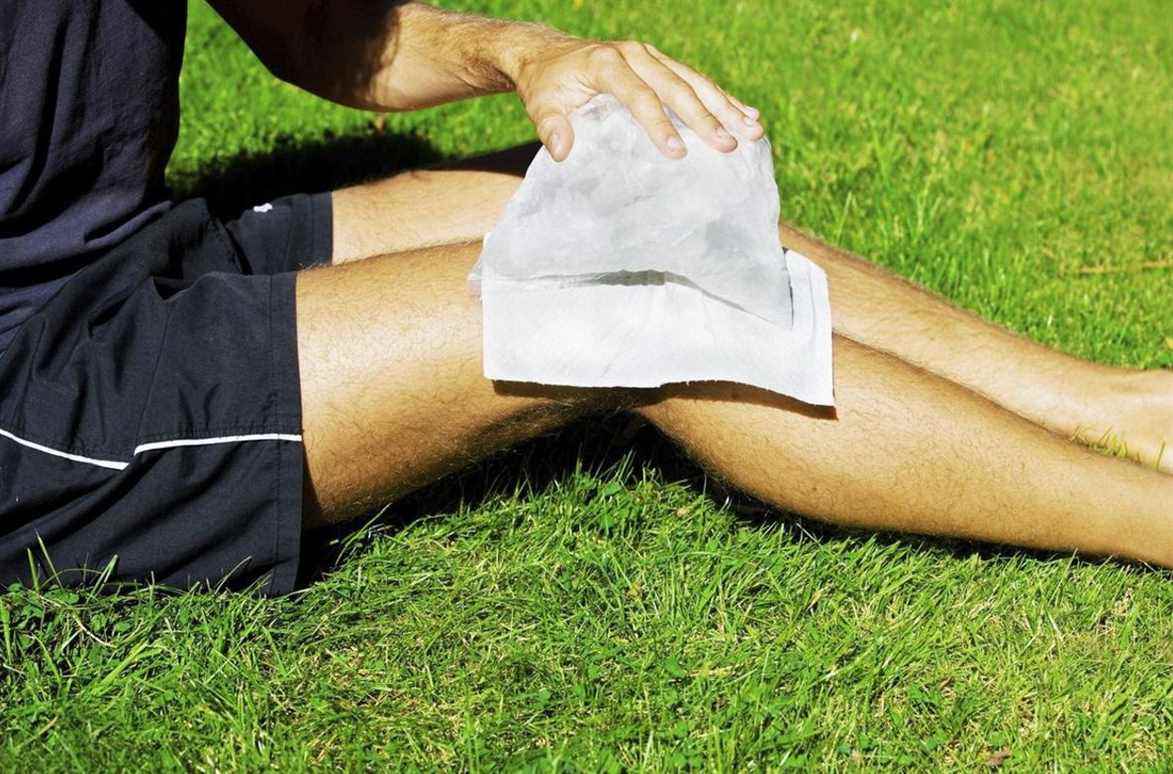The subject is at the heart of all thinking about sports medical management, and the theories regarding the treatment of an injury constantly varying, it is not surprising that the point of view on the benefits of ice is controversial …
When someone twists their ankle, their first instinct is to apply an ice pack … The same goes for an athlete who is given the same treatment before he is even evacuated from the field.. Ice is the essential solution in any “up-to-date” treatment protocol. But is this gesture consistent with the latest advances in medical research?
The very first reference to the use of ice in the treatment of injuries dates back to 1978. It was then integrated into the RICE protocol (Ris, Ithis, VScompression, Elevation), developed by Dr Gabe Mirkin (1). The principle was then to accelerate healing by limiting the mechanism of inflammation. This thought pattern became deeply rooted in our culture over the next 20 years, we then spoke of RICE-ing to describe this type of care, before the P made its appearance (PRICE) to introduce the concept of Protection. 14 years later, the acronym becomes POLICE (Protection, Optimal Loading, Ice, Compression, Elevation) (2).
Why such a change ?
Research had in fact established in the meantime that an “adapted loading” (Optimal Loading) from the very beginning. promotes faster recovery and that on the contrary, total rest was detrimental (3).

But what about the ice cream?
It has in fact been established that the ice had a rapid analgesic action on the skin tissue, however, it has no influence on the deeper muscles, the temperature of which is not changed.
Since 1978, the idea that ice is a healing factor has therefore been questioned. Public opinion certainly reports that its application “relieves”, at least in the short term, but what about its effect in the medium and long term?
Consult a Certified Osteopath
In 2014, Dr. Mirkin finally recognized the advances in Research and removed the ice from his initial protocol. He thus admitted that while coaches had applied “RICE” for several decades, it was now proven that ice and complete rest actually hindered rapid recovery (3).
What Dr Mirkin was referring to then was the positive influence of inflammation on the healing process. Indeed, the action of IGF-1 (Insulin-like Growth Factor) and macrophage cells that produce them helps remove damaged tissue, which promotes the repair process itself. The application of ice therefore neutralizes this natural reaction of the body.
Ice was finally permanently revoked from the protocol for the medical management of an injury in 2019, giving rise to the brand new acronym: PEACE & LOVE (Protection, Elevation, Avoid Anti-Inflammatory Drugs, Compression, Education, Load Optimization, Vascularization and Exercise) (4).

It therefore appears that despite its short-term analgesic effect, it is preferable not to have recourse to ice.
However, it seems interesting to put this point of view into perspective. Although inflammation is favorable for recovery, excessive or prolonged edema is detrimental.. Indeed it causes harmful pressure on the tissues, hinders joint mobility and can increase pain and prevent muscle function.
Thus in cases of severe sprains or in cases of ACL surgery which can lead to severe quadriceps dysfunction, the use of ice can help limit the extent of the edema and its effects (6). Conversely, a muscle tear which does not cause significant edema, does not require resorting to it.
In conclusion, current Research data encourage us to avoid the use of ice as much as possible. However, it can be used in severe cases when edema is an obstacle to recovery, and only in the short term..
So what should be our approach in the event of an injury?
Encourage people to resume physical activity as quickly as possible while being reasonable of course.
Sources
(1) Mirkin, G. & Hoffman, M. (1978). The sportsmedicine book. (1st ed.). Little Brown and Co.
(2) Bleakley, CM, Glasgow, P. & MacAuley, DC (2012). PRICE needs updating, should we call the POLICE? British Journal of Sports Medicine. 46, 220–221.
(3) Mirkin, G. (2014, March 16). Why Ice Delays Recovery. https://www.drmirkin.com/fitness/why-ice-delays-recovery.html
(4) Dubois, B. & Esculier, JF. (2020). Soft-tissue injuries simply need PEACE and LOVE. British Journal of Sports Medicine. 54, 72-73.
(5) Scott, A., Khan, KM, et al. (2004). What do we mean by the term “inflammation”? A contemporary basic science update for sports medicine. British Journal of Sports Medicine. 38, 372–380.
(6) Palmieri, RM, Ingersoll, CD, et al. (2004). Arthrogenic muscle response to a simulated ankle joint effusion. British Journal of Sports Medicine. 38, 26–30.
Consult a Certified Osteopath
